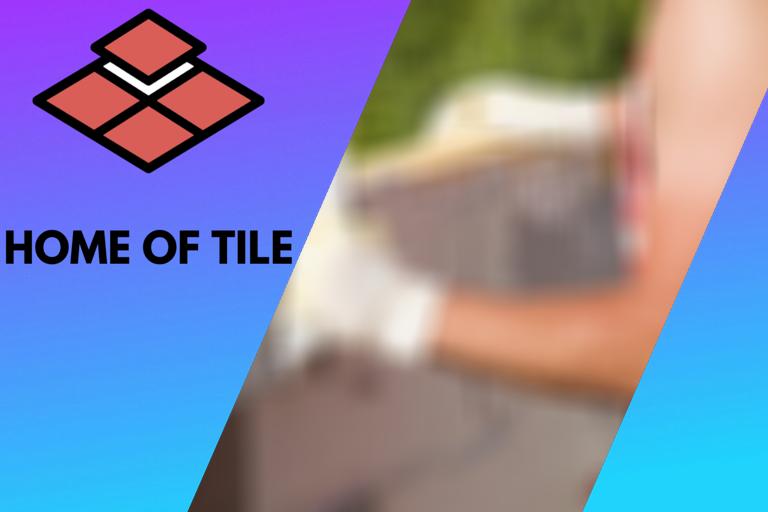How To Lay Rubber Outdoor Tiles. 12 things you should know
If you’re looking to add a new and stylish touch to your garden, you may want to consider laying rubber outdoor tiles. They look great, but they’re also durable and easy to maintain.
Here’s a guide on how to lay rubber outdoor tiles:
- Layout: Decide on the layout of your tiles. You may want to create a specific pattern or design or simply arrange them in a random fashion.
- Mark the area: Use a tape measure to mark out the area where you will be installing the tiles.
- Cut the tiles: Use a sharp knife or saw to cut the tiles to size.
- Adhesive: Apply a layer of suitable rubber adhesive to the surface where the tiles will be installed.
- Add the rubber tiles: Place the tiles in the desired position and press them firmly into the adhesive.
- Let it dry: Leave the tiles to dry for 24 hours.
- Ready: Once the tiles have dried, you can start using them!

Contents
How To Lay Rubber Outdoor Tiles
Rubber outdoor tiles are a great way to add a functional and decorative touch to your outdoor space. They are easy to install and come in various colors and styles to suit your needs. Here is a guide on how to install rubber outdoor tiles:
● How To Choose The Right Rubber Outdoor Tiles
Rubber outdoor tiles are a great way to add a new look to your garden and protect your grass from wear and tear. But with so many options on the market, how do you choose the right tiles for your space? Here are a few tips to help you get started:
- Consider your budget: Rubber outdoor tiles can be expensive, but there are various options to fit any budget. If you’re looking for a budget-friendly option, consider recycled rubber tiles. These tiles are made from recycled rubber and are a more affordable option.
- Think about your needs: What will you use your outdoor tiles for? If you’re looking for a durable surface that can withstand heavy traffic, rubber outdoor tiles are a great option. If you’re looking for a more decorative option, consider a rubber tile with a pattern or design.
- Consider your climate: If you live in a climate with extreme temperatures, it’s important to choose a rubber tile that can withstand the heat and cold. Tiles made from recycled rubber are a good option for extreme climates, as they are more resistant to heat and cold.
- Consider your style: Rubber outdoor tiles come in a variety of styles, so you can find the perfect tile to match your style. Whether you’re looking for a traditional tile or something more modern, there’s a tile for you.
- Think about installation: Rubber outdoor tiles can be installed in various ways, so be sure to consider how you want them installed. If you’re looking for an easy installation, consider interlocking tiles. These tiles lock together and can be installed by one person in just a few minutes.
How Do You Lay Rubber Tiles?
When it comes to rubber tiles, there are a few different ways that you can go about laying them. The most common way is to use adhesive to attach them to the surface that you are working on. However, you can also use tape or even friction to keep them in place.
– Lay rubber tiles with adhesive
If you are using adhesive or glue, make sure that the surface is clean and dry before you start. Cut the tiles to the size you need, and then apply the adhesive to the back of the tiles. Place them in the desired location, and use a rolling pin or a blunt object to press them firmly.
● Methods to lay rubber tiles
– Lay rubber tiles with double-sided tape
If you are using double-sided tape, make sure that the surface is clean and dry before you start. Cut the tiles to the size you need, and then apply the tape to the back of the tiles. Place them in the desired location, and use your hands to press them firmly into place. If you use the rubber tiles in a moist or wet location, the double-sided tape might not be the best option
– Lay rubber tiles with friction
If you are using friction, make sure that the surface is clean and dry before you start. Cut the tiles to the size you need, and then place them in the desired location. Use your hands to press them firmly into place.
Using friction to lay rubber tiles is not a good solution for all locations. If the ground is steep, it is not the best option. And for locations where a lot of force might be applied, I do not recommend it.
● Installing Rubber Tiles
Installing rubber tiles can be an easy job. Particularly with interlocking rubber tiles. You can place the tiles on the surface, connect them and press them down until they’re in place for a simple installation. If you’re using tiles with a raised pattern or design, you’ll need to use a level to make sure they’re adequately aligned.
● Install Rubber Tiles Around Objects
If you’re working in a tight space or an oddly-shaped room, you may need to use some adhesive to attach your tiles before you install them. This will help them fit snugly against any curves or obstacles on the surface.
There are a few different types of adhesive that you can use for this purpose. Some adhesives are explicitly designed for rubber tiles, while others are more general-purpose. Be sure to read the instructions carefully to ensure you’re using the right type of adhesive for the tiles you’re installing.
Once the adhesive is in place, you can install the tiles as usual. They should fit snugly against the surface, and there should be no gaps between them and the adhesive. If you do have any gaps, you can fill them in with some grout.
Allow enough time for the adhesive to dry entirely before you start grouting. Otherwise, the grout may not adhere to the tiles properly.
● Use Rubber Tiles Uneven Surface
Rubber tiles on an uneven surface are a challenge. I recommend adding a foam or rubber underlayment layer to help level out the surface before installing the tiles.
This will ensure a smooth, even surface for your tiles to adhere to and will help to prevent any problems with the finished product.
Can You Lay Rubber Pavers On Dirt?
Yes, you can lay rubber pavers on dirt. This is a common practice, as rubber pavers are a versatile and durable option for outdoor spaces. They can be used to create various looks, and they are easy to maintain.
One of the benefits of using rubber pavers is that they are resistant to weathering and fading, and this means that they will retain their color and appearance for years to come. Additionally, they are non-slip, making them a safe option for areas where people will be walking.
● The soil needs to be Smooth and level
If you are looking to lay rubber pavers on dirt, there are a few things that you will need to keep in mind. First, you will need to make sure that the surface is level and smooth, and this will ensure that the rubber tiles are installed correctly and that they are stable.
● The soil needs to be well-drained
If your pavers are on the soil directly, you will need to make sure that the ground is well-drained. If the ground is wet or muddy, the pavers may get unstable. In this case, you may need to install a drainage system to ensure that the area is adequately drained.
Overall, rubber pavers are an excellent option for outdoor spaces. They are durable, easy to maintain, and resistant to weathering and fading. If you are looking to lay rubber pavers on dirt, ensure that the surface is level and smooth and that the ground is well-drained.
Can You Use Rubber Tiles Outdoors?
Rubber tiles are an exciting flooring option because they can be used both indoors and outdoors. This is because they are made of durable, weather-resistant materials.
There are a few things to consider before installing rubber tiles outdoors. The most important factor is the climate. If you live in a hot and humid climate, the tiles may not hold up as well as they would in a cooler climate. Additionally, if your location is exposed to a lot of sunlight, the tiles may become too hot to walk on.
Another thing to consider is the surface on which the tiles will be installed. If the surface is uneven, the tiles may not be as stable as you would like. Additionally, the tiles may not be the best option if the surface is prone to water damage.
If you decide that rubber tiles are the right option for your outdoor space, there are a few things you can do to help them last longer. Add a layer of protection, such as gravel or sand, to help keep the tiles from becoming damaged.
● Advantages Of Rubber Flooring
There are many advantages of rubber flooring. Rubber flooring is durable, easy to clean and maintain, and affordable.
Rubber flooring is durable and can last for many years, and it is also easy to clean and does not stain easily. Rubber flooring is also non-toxic and does not release any harmful chemicals, making it safe for use in homes with children and pets.
Rubber flooring is also affordable and can be bought for a fraction of other flooring materials. It is also easy to install and does not require special tools or skills.
Overall, rubber flooring is a versatile and affordable flooring option that is perfect for homes with children and pets. It is durable, easy to clean, maintain, and safe.
● Disadvantages Of Rubber Flooring
Although rubber flooring is often praised for its durability and easy maintenance, there are several disadvantages to consider before installing this type of flooring in your home.
- Cost: Rubber flooring can be pretty expensive, especially if you are looking for a high-quality product.
- Thick: The rubber material can be quite thick and heavy, making it difficult to install in certain areas.
- Color and texture: The color and texture of rubber flooring can be quite unappealing to some people.







